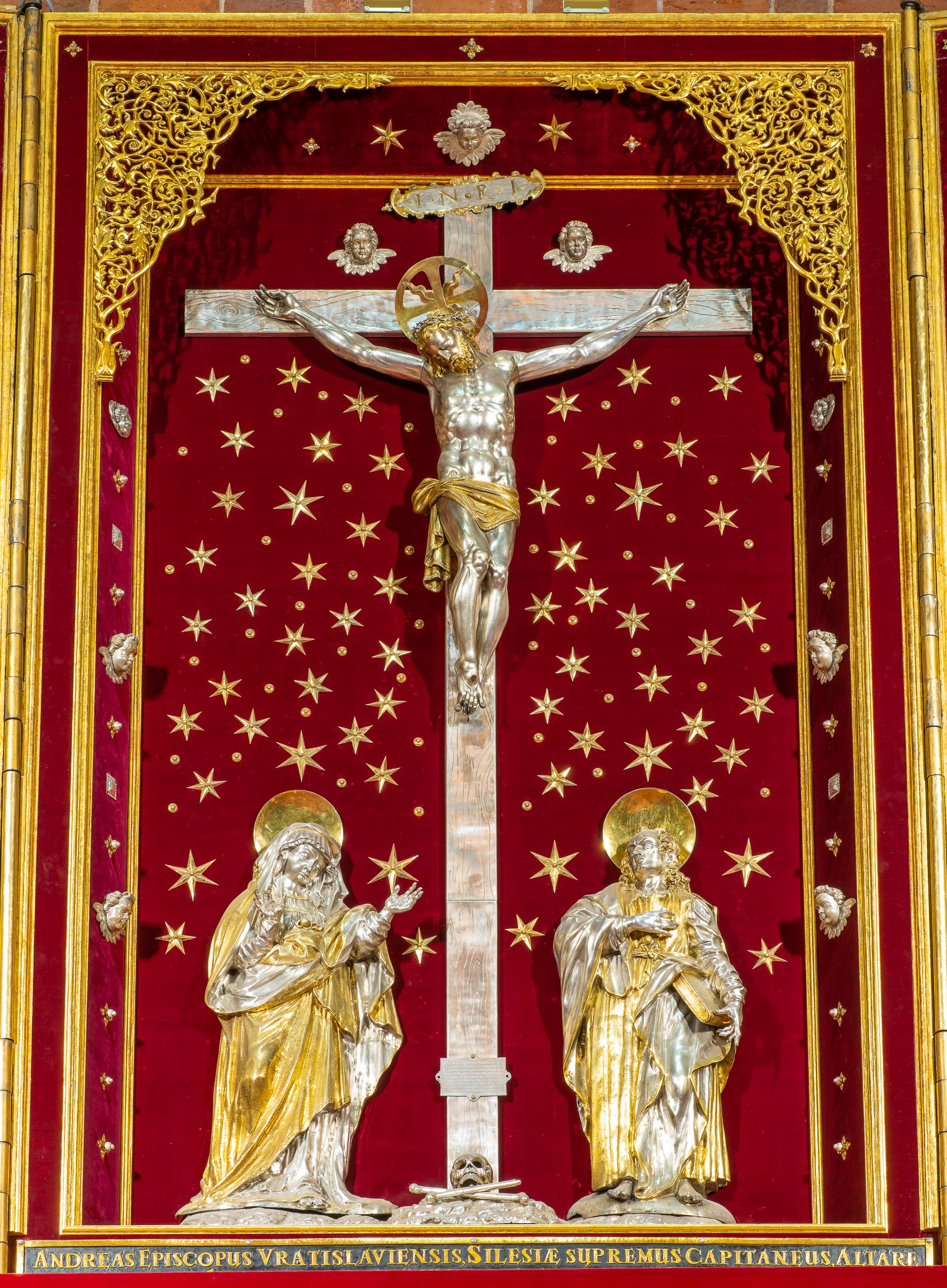
The silver altarpiece of Bishop Jerin
- Style
- Late Renaissance
- Date
- 1590-1591
- Material and technique
- Silver , gold, oil on wood, burgundy velvet
- Size
- Height 301.5 cm x width 376 cm
- Location
- The Cathedral of St. John the Baptist in Wroclaw, Poland
- Description
- The Mannerist altarpiece is a pentaptych, consisting of a wooden altar cabinet, upholstered in maroon velvet decorated with silver stars. Against its background are silver figures of the crucified Jesus Christ, Mary and St. John the Evangelist. In the recesses of the wings, also lined with maroon velvet and decorated with stars, are the silver figures of St. Andrew the Apostle and St. Jadwiga of Silesia (right wing) and St. John the Baptist and St. Vincent of Saragossa (left wing). In addition, below the saints are small silver medallions related to the founder: in the right wing his coat of arms and in the left wing a portrait in profile. The main cabinet and the recesses of the wings are framed by gilded openwork floral ornaments in silver. The open altarpiece is 376 cm wide and 301.5 cm high. The main wing is closed with four wings. The silver altar figures of Jesus and Mary and the saints: St. John the Baptist, St. Vincent, St. Andrew, St. Jadwiga Slaska and St. John the Evangelist, as well as painted representations of scenes from the life of the cathedral's patron saint St. John the Baptist and images of the Church Fathers are among the finest works of late Renaissance art in Silesia. The free-standing silver and partly gilded statue of the Risen Christ (Salvator Mundi) by Caspar Pfister from 1625 is not only the most important surviving work by this outstanding artist, but also the most outstanding of the masterpieces of Wroclaw goldsmithery of the first half of the 17th century.